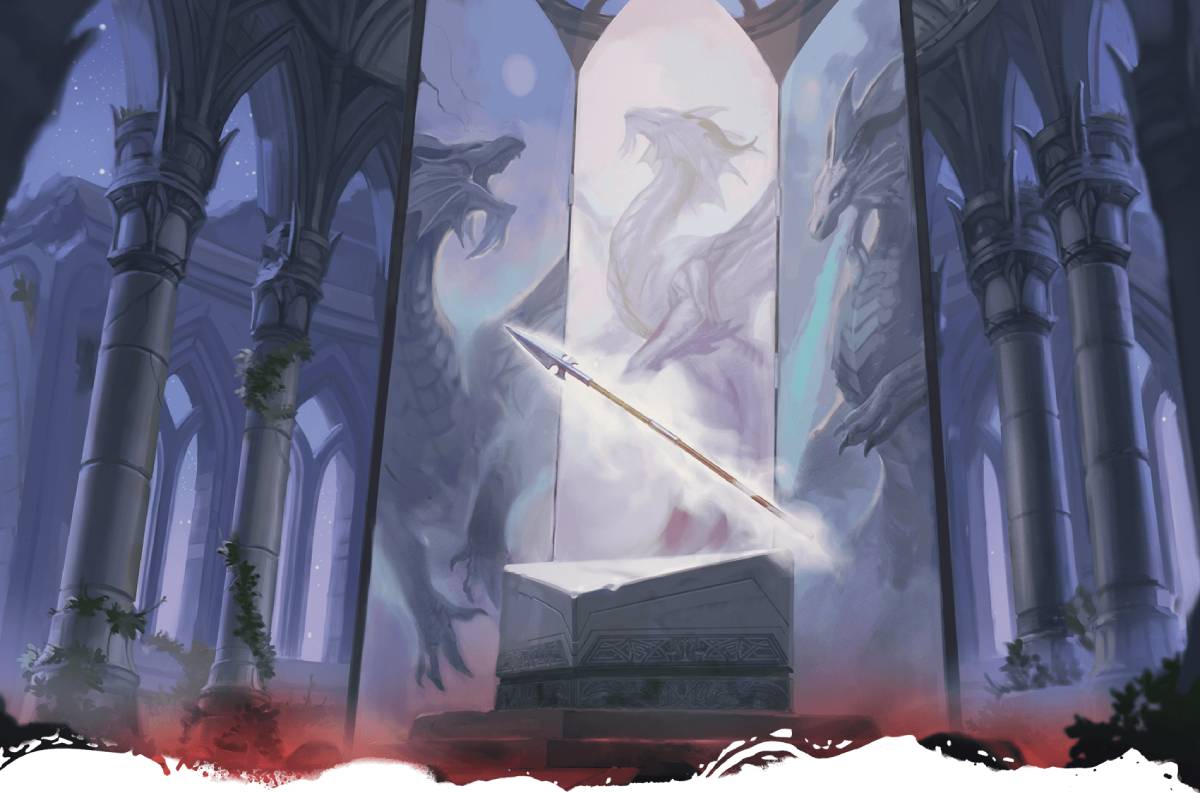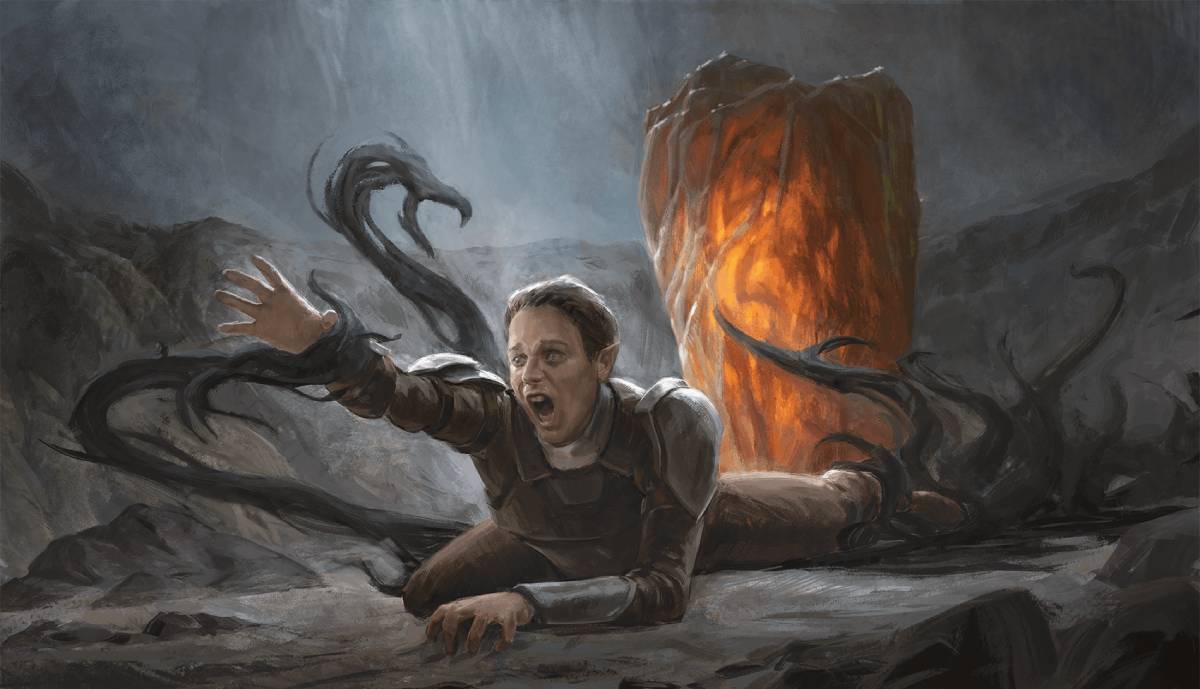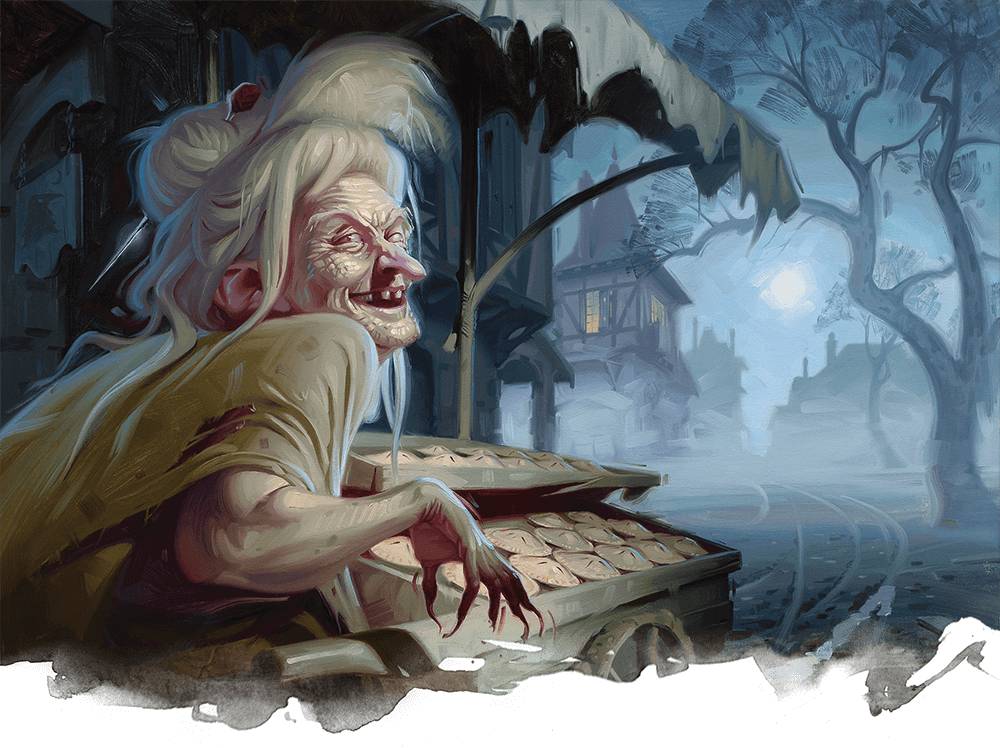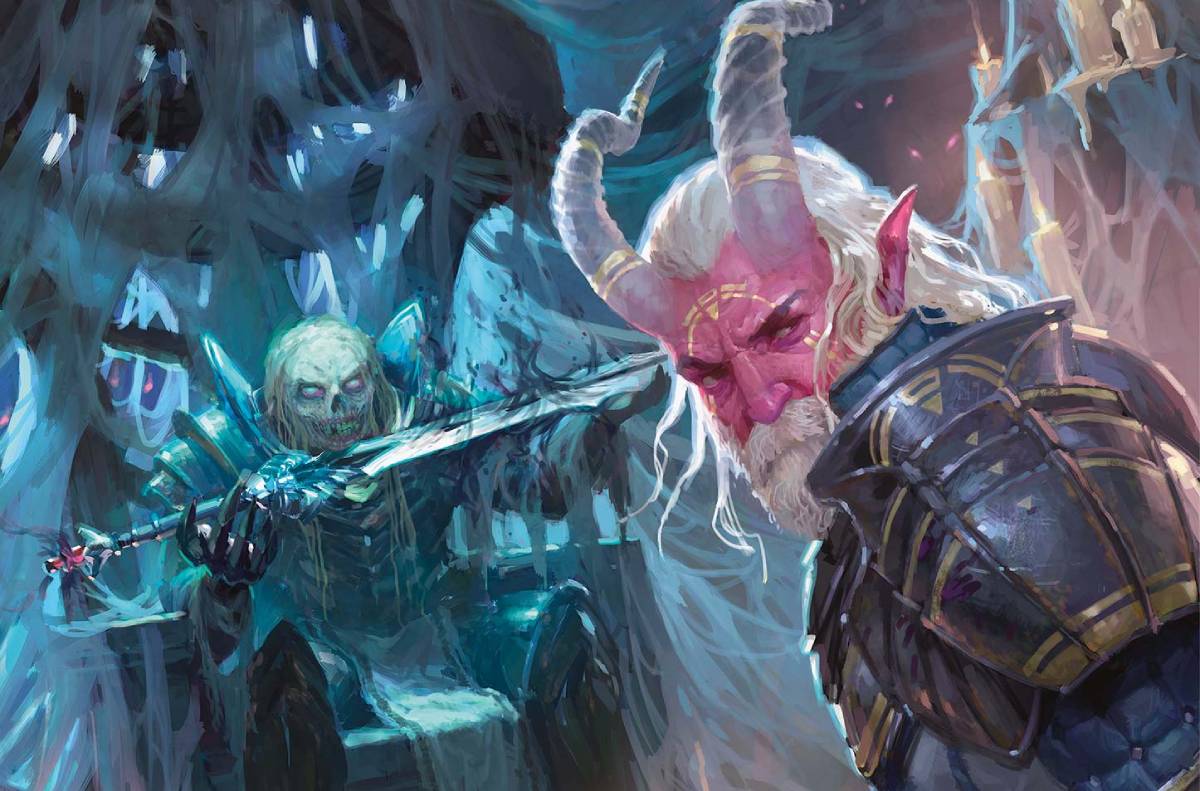Legendary magic items are the stuff of players’ dreams. Yet, few campaigns hit 17th level, when characters begin stumbling upon them, according to the Dungeon Master’s Guide. But DMs don’t need to follow that guidance. It’s your game, after all.
Still, a 1st-level barbarian touting 29 Strength with a belt of storm giant strength can turn any band of goblins into minced meat with one hand behind their back. So, how do you balance legendary magic items for lower-tier campaigns? Let’s explore some options:
- Why Give Low-Level Characters Legendary Magic Items?
- Fakes That Break
- Chance of Failure or Mishap
- Limited Time and Limited Use
- Oops! They’re Cursed
- Goodbye, Attunement Slots
- Magic Items That Level With You
- Sharing Is Caring
- Legendary Magic Items Mean Legendary Enemies
Why Give Low-Level Characters Legendary Magic Items?

Your party is a bunch of fresh-faced adventurers who have barely managed to take down giant rats in their days. They’re still learning how to cast spells and even land a bullseye at their local tavern’s dartboard. So why hand them a vorpal sword, or any magic item beyond their power level?
It can be exciting going off script, especially when your players least expect it. Powerful magic items switch up the experience of playing low-level characters, and give your players more opportunities for antics or to just feel like badasses right out the gate.
These items can also be at the center of your adventure. The well of many worlds is the perfect fit for a plane-hopping campaign. And the deck of many things can set off all manner of side quests on its own, ala the Donjon, The Fates, and The Void cards. On the subject of the deck of many things, though, be prepared for things to go massively off the rails when it shows up.
But you don’t really need a reason to introduce magic items packing this much punch, especially if you’re running a one-shot adventure. You just need a plan for handling them, and get your players onboard, too. I’d bet some coin they won’t mind, though.
Fakes That Break
Wherever there’s coin to be made, scammers run amuck. When the characters first loot a legendary magic item, have them make an Intelligence (Investigation) check, with a success revealing that the loot is a cheap knock-off of the real thing. Sure, that ring of djinni summoning works, but it has a knack for summoning djinni that are already injured, say at a quarter of their normal hit points. That change puts the ring at a higher risk of losing its luster.
Alternatively, a fake holy avenger could have a 5% chance of breaking each time a successful attack roll is made with it. And the chance of breaking increases by 5% for each subsequent hit. If rolling percentile die turn after turn is tedious for your players, you can make these rolls in secret ahead of time, so you know how many hits the holy avenger has before turning to dust.
Xanathar’s Guide to Everything includes a table with magic item purchase complications. These offer some alternative scenarios when the party is picking through artifacts in some old dusty bin.
Chance of Failure or Mishap

You know how in Pokémon games when you have a Pokémon that’s too high of a level for your badges it’ll start ignoring your commands? Do that with magic items.
While the characters are below a certain level, their legendary magic items may prohibit attunement. At dawn, each character attuned to a legendary magic item rolls a Charisma check. On a failure, their attunement to the magic item immediately ends and they cannot attune to it again until the next dawn. This mechanic adds just enough unpredictability that the party will need to be prepared enough on their adventures to handle obstacles without the use of their most powerful items.
Alternatively, consider this: A wizard at a magic academy discovers their staff got mixed up with the dean’s staff of the magi. The wizard has a decent education under their belt. Heck, they can cast burning hands at 2nd level! But, as they soon discover, the staff contains magic far beyond their comprehension, and casting spells out of it isn’t as simple as a flick of the wrist. Each time they expend a charge to cast a spell using the staff of the magi, they must roll on the Scroll Mishap table or the Wild Magic Surge table (your choice).
Limited Time and Limited Use
If you want your players to have a taste of godhood without running the risk of derailing a campaign, put an expiration date or a finite number of charges on their magic items.
For example, the party stumbles upon a magical thrift store and snags a deal on a talisman of pure good and a scroll of foresight. The catch? The talisman only contains 1 charge on it as opposed to 7, and the scroll is so old that its magic will dissipate within 30 days. Just be sure to share this information with your players upfront. You don’t want them feeling like you’re pulling the rug out from under them after the fact.
Alternatively, the characters may be able to rent or borrow magic items. I previously wrote about implementing a magic item rental system in your D&D campaign. The key benefit to such a system is that the characters can try out different and powerful magic items without fear of destabilizing game balance in the long term. You’ll also keep your hands on the dial. If a particular magic item would trivialize an upcoming encounter, simply don’t include it in your list of available rentals.
To keep things simple: If the party helps out a rich NPC, they may be willing to loan out one of the magic items collecting dust in their private collection as thanks.
Oops! They’re Cursed

At 5th level, parties can access remove curse, but there’s one interesting detail you may have missed: The spell can’t remove curses from magic items. So, if the magic items you dole out happen to be cursed, the party will have to suffer from them in exchange for using items far above their level. The tricky part is making sure the pain is worth the power.
Below, I provide homebrew curses for the different types of magic items. These are punishing but hopefully not enough that your players will refuse to equip or carry the items. You can also check what cursed magic items are available from official sources. You could repurpose these or they could spark an idea.
Alternatively, you could consult the players. When you give one player’s character a magic item, you could ask the player to their right what curse it contains. This could lead to some hilarious results.
Homebrew Curses for Magic Items
| Magic Item Type | Curse |
| Armor | Curse of Weakness. You are encumbered and cannot become unencumbered while you wear the armor. Further, whenever you have one or more levels of exhaustion, you are heavily encumbered. |
| Potion | Curse of Admixture Immunity. While this potion is on your person, you cannot consume or benefit from other magic items that require you to drink them. This curse ends 1d4 days after the potion is no longer in your possession. |
| Ring | Curse of Severance. Each time you use this ring, or its effects trigger, you lose a finger. While you are missing one or more fingers, whenever you attempt to cast a spell that requires somatic components, roll a d20. On a 1 or 2, the spell fails and the spell slot is wasted. |
| Rod | Curse of Sleeplessness. While attuned to this magic item, you sleep fitfully. When you finish a long rest, you regain 1d3 fewer Hit Dice (minimum of one die). |
| Scroll | Curse of Illiteracy. While carrying this scroll, you cannot read any written language, except to cast the spell inscribed on this scroll. This curse ends 1d4 days after the scroll is no longer in your possession. |
| Staff | Curse of Mortal Charges. Whenever you expend one or more charges while using this staff, you lose twice as many hit points and your hit point maximum is reduced by an equal amount until the end of a long rest. |
| Wand | Curse of Specialization. Choose one spell you know or can prepare. While attuned to this wand, you can only cast the chosen spell and spells granted by this wand. |
| Weapon | Curse of Pacifism. Each time you hit a living creature with this weapon, you take 1d4 psychic damage. |
| Wondrous Item | Curse of Fixation. While attuned to this magic item, you cannot use or benefit from any other magic item. |
Purifying a Cursed Magic Item
Chances are, your players will ask if there’s any way to remove the curses from their magic items. Breaking such curses is the stuff of adventure. Perhaps a cursed staff was crafted by a powerful sorceress whose apprentice betrayed her and stole the staff for themselves. Purifying the staff may require the party to seek out the apprentice—now a master sorcerer themselves—and avenge the sorceress by giving them a whooping.
Check out the “Horror Adventures” chapter of Van Richten’s Guide to Ravenloft for sample curses and their resolutions to help you brainstorm.
Goodbye, Attunement Slots
Rather than have a legendary magic item take up one attunement slot, have it take up all of their slots. This effect is akin to cursing the magic item, but it can reflect just how powerful the item is compared to its low-level wielder. As the character moves up in levels, the magic item could take up fewer attunement slots, reflecting their growth.
Magic Items That Level With You

Vestiges of Divergence
In the world of Critical Role, ancient magic items known as the Vestiges of Divergence were created by the gods and wielded by heroes during an apocalyptic war known as the Calamity. When the war ended, the Vestiges went the way of Carmen Sandiego. When found, these magic items are in a weakened, dormant state. As its wielder faces trials and—mechanically speaking—levels up, so does their Vestige power up.
These magic items are a simple way to introduce powerful magic items to lower-level players without the need for tuning things beforehand. As the Explorer’s Guide to Wildemount details, a Vestige of Divergence becomes awakened between 9th and 15th level, and becomes exalted between 16th and 20th level, though ultimately it’s up to you when a Vestige powers up.
As the DM, your biggest challenge in using Vestiges will be setting up and responding to dramatic moments in each character’s development. But trust me, those campaign-defining moments where the characters pull out a clutch victory thanks to some secret power is what D&D was made for.
Hoard Magic Items
Fizban’s Treasury of Dragons offers items imbued with the ambient magic of dragon hoards. These magic items can be found in a Slumbering state and be leveled up by allowing them to marinate in a dragon’s hoard.
Usually, the process of leveling up the magic items takes a year of time spent in a dragon's hoard. Doing so would require your party to sneak in and out of a dragon’s lair unnoticed, or somehow win the favor of the dragon so they can ask to leave their belongings in the hoard. Or, if they want to go the "easy" route, they can slay the dragon and level up their weapons in 8 hours instead of a full year.
Sharing Is Caring
What’s easier than balancing a campaign around four legendary magic items? Balancing a campaign around one legendary magic item. If your party of adventurers have a habit of sharing, you can introduce an item that each of their characters will get some use out of, or that gives your party some fun utility.
The very rare rod of security gives your party their own pocket dimension where healing is accelerated, and the carpet of flying can get the whole party up to hard-to-reach places—and maybe even encourage some singalongs.
But even a simple ioun stone of regeneration can take pressure off the party healer.
Legendary Magic Items Mean Legendary Enemies
Rather than punish the characters or tone down the power of legendary magic items, have the items be a major plot point and something you consider when balancing combat encounters.
You know that really neat horn of Valhalla you got? Turns out summoning warrior spirits to do the dishes is super blasphemous, and now you have their ancestors coming after you. Or maybe an ancient red dragon just sniffed out that ring of invisibility in your pocket and has a proposal: Leave it at their hoard or get turned into a pile of ash.
When building combat encounters, assume the party level is one or two levels higher than it actually is, depending on which items they’re sporting. But beware: While the party will likely be able to dish out more damage, higher-level enemies can still easily down low-level characters. This could lead to swingy combat.
How Do You Balance Magic Items?
Giving your players an opportunity to toy around with magic items they may rarely or never get to experience can be massively fun. It could lead to some hilarious in-game moments and challenge their characters in unique ways.
But maintaining some level of game balance as the DM is important if you’re hoping to run an otherwise standard adventure. Magic items can make it difficult to plan and balance encounters. Experiment with the above options and see what works for your table!
Michael Galvis (@michaelgalvis) is a tabletop content producer for D&D Beyond. He is a longtime Dungeon Master who enjoys horror films and all things fantasy and sci-fi. When he isn’t in the DM’s seat or rolling dice as his anxious halfling sorcerer, he’s playing League of Legends and Magic: The Gathering with his husband. They live together in Los Angeles with their adorable dog, Quentin.








-
View User Profile
-
Send Message
Posted May 5, 2023A very nice article with some wonderful ideas!
-
View User Profile
-
Send Message
Posted May 5, 2023I gave my party vestiges at level 1 because I wanted gear that levels with them. They love their items.
-
View User Profile
-
Send Message
Posted May 6, 2023Items like vestiges and hoard items are great because you can level up your character's items without having that weird videogame feel.
-
View User Profile
-
Send Message
Posted May 6, 2023I wasn't really familiar with the Vestiges of Divergence (and the similar Arms of the Betrayers from Explorer's Guide to Wildemount) until they were mentioned here. Just had a look at them - really a cool concept. Thanks for both the article and for getting me in tune with some items I am definitely going to use in my campaigns.
-
View User Profile
-
Send Message
Posted May 6, 2023Even as a Vestige, you probably don't want to be giving Stormgirdle to a level 1 character.
-
View User Profile
-
Send Message
Posted May 6, 2023The Balance in game is important. However, in my opinion, Anytimes the players/characters need feeling powerfull.
-
View User Profile
-
Send Message
Posted May 6, 2023interesting ideas, there's some items that i would like to test, thanks
-
View User Profile
-
Send Message
Posted May 6, 2023I gave my players very rare items at lv. 2, so this is very helpful
-
View User Profile
-
Send Message
Posted May 6, 2023I'll use them like vestiges
-
View User Profile
-
Send Message
Posted May 6, 2023In my current game, I ended up giving legendary items to my players at level 5 because half the party dropped out of the campaign, so I wanted to give the two remaining players the ability to actually survive on their own in what's turned into a buddy cop comedy of a campaign. Should a level five sorcerer be wearing Robes of the Archmagi? When their base AC is twelve, they only have 20 HP, and they lost their tank, yes, yes they should be.
-
View User Profile
-
Send Message
Posted May 6, 2023Along the lines of "items that level with you," I did a variation on a Moonblade where the powers added by previous wielders weren't all immediately available, but had to be unlocked over time (as the new wielder gained the blade's trust, uncovered larger mysteries, did important things, etc.)...basically it meant the sword could level along with the character. It worked well as part of the story, though that sort of thing always has to be handled carefully to avoid putting too much of the focus on just one player character.
-
View User Profile
-
Send Message
Posted May 6, 2023Why not? A storm herald barbarian would love it
-
View User Profile
-
Send Message
Posted May 7, 2023Great article! These neat tips and tricks articles are awesome. Keep them coming!
-
View User Profile
-
Send Message
Posted May 8, 2023Really great article! I really love most of these idea's! Definitely Adding some of these to my tables!
-
View User Profile
-
Send Message
Posted May 8, 2023Great article with some good balancing explained well. The only thing I am getting hung up on is the Horn of Valhalla ancestors coming after you. Wouldn't it be their descendants who may be alive and not the dead spirits of the dead spirits you just abused? But that could be the twist I guess, having even more ancient spirits than the spirits you are abusing to come and 'deal' with you.
-
View User Profile
-
Send Message
Posted May 8, 2023Call of the Netherdeep is a good example of this. I won’t say much because of spoilers, but a vestige is handed to the party somewhat early (it can be missed kindof)
we spent a good half hour discussing who should have it. Both build wise and roleplay wise. For those who played it, our armorer artificer got it.
-
View User Profile
-
Send Message
Posted May 8, 2023I gave a 1st lvl character a Deck of Many Things to see what would happen. I had to end up picking good cards for them so I didn't kill them automatically.
-
View User Profile
-
Send Message
Posted May 8, 2023True, very true
-
View User Profile
-
Send Message
Posted May 8, 2023Great list! Two other things I like to do to magic items ... 1) Make them sentient and only willing to impart their magic in increments as the player levels up. Meloon Wardragon's sentient Azuredge Battleaxe is a beastly +3 weapon. What if a level 3 player gets their hand on it, but Azuredge is only willing to be a +1 for that player, until they grow more worthy?
2) If a player is fixated on finding a certain magic item, let that be a new side quest for the party. They can get that item, but it's going to be dangerous and it's going to cost them. Perhaps a party member dies en route to obtaining the magic item. Now the player has to carry the guilt of knowing their new trinket costs a life. DRAMA! STORY!
-
View User Profile
-
Send Message
Posted May 8, 2023Yeah, I knew a DM that kept introducing stormbringer into new campaigns. Anyone that does not know what strom bringer is, read Elric, the stealer of souls by Michael Moorcock. I like the idea of leveling magic items. Not to dissimilar from heirloom items in World of Warcraft.